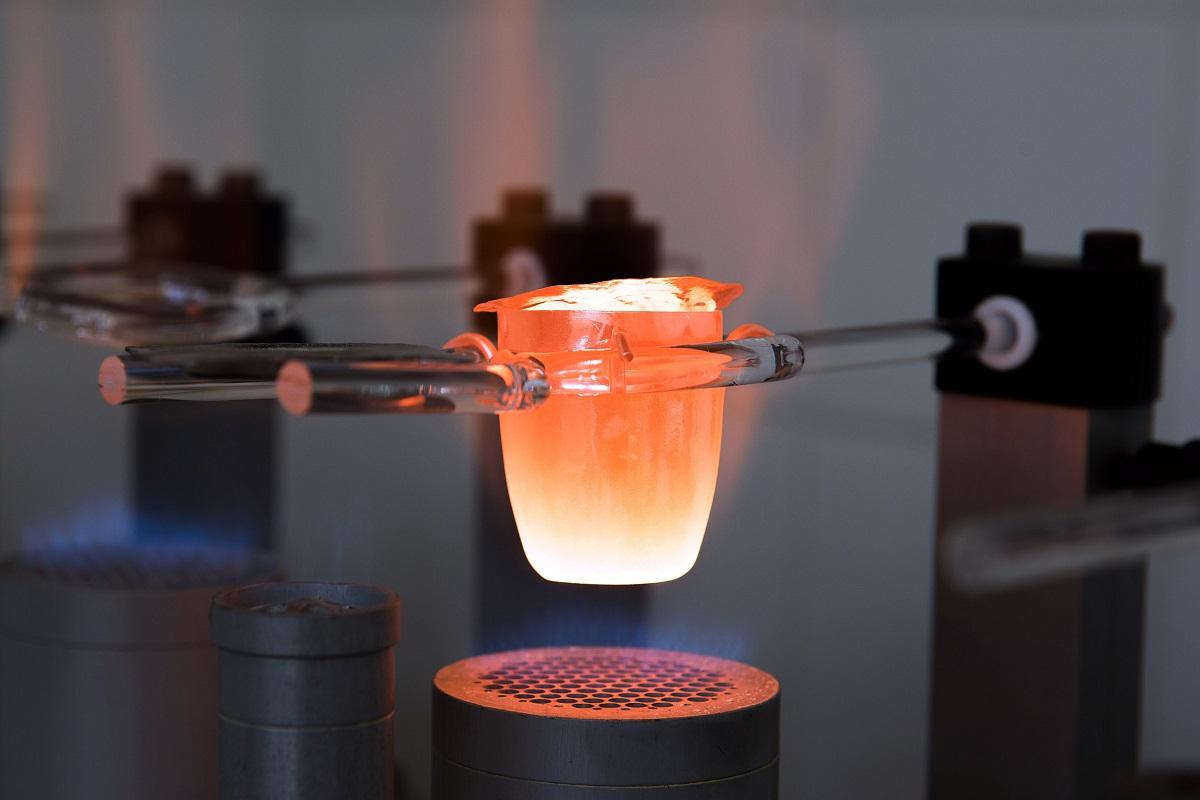In this laboratory complex of the Museum für Naturkunde Berlin, researchers investigate the chemical composition and structure of rocks, meteorites, minerals and fossils. The objects come from collections, expeditions and experiments. The material-related research is based on various imaging and chemical-physical methods. The laboratory complex is located on one floor of the museum’s main building for technical and organisational reasons. It features several, complementary large appliances. In many cases, answers to research questions can only be found in the micrometre range. In addition to the museum's working groups, the laboratory complex is also available to guests: Researchers from other institutions, young scientists and students from the near-by universities. Guided tours for visitors provide insights into the research.
Equipment
Scanning electron microscope JEOL JSM-6610LV with LaB6 cathode, Cl detector and a Bruker Quantax 800 EDX system as well as the EBSD system CrystAlign 400
Head of laboratory: Dr. Lutz Hecht
Laboratory employee: Kirsten Born
The scanning electron microscope (SEM) is used for structural and chemical analysis of rocks, minerals and fossils. The large sample chamber holds objects up to ten centimetres in size. The SEM has a low vacuum mode so that even uncoated or not fully vacuum-resistant samples can be examined. Using an e-flash EDS detector, element distribution maps in thin slices of rock can be created and special phases can be found in a short time.
Electron microprobe with field emission cathode JEOL JXA-8500F, 5 WD spectrometer, Bruker EDX System Quantax
Head of laboratory: Dr. Lutz Hecht
Laboratory employee: Dr. Felix Kaufmann
The electron microprobe is used mainly to investigate the chemical composition of rocks and mineral phases in the centimetre down to the micrometre range quantitatively. Typically, highly polished thick or thin slices are used for this purpose. Highly vacuum resistant fossil specimens can also be investigated. Equipped with a field emission cathode, the microprobe can image structures with particularly high resolution and can be used for chemical analyses as well as the recognition of elemental distribution patterns down to the nanometre range.
Raman spectrometer Horiba LabRam
Head of laboratory: Dr. Tanja Mohr-Westheide
Laboratory employee: Kirsten Born
The Raman spectrometer is used to structurally characterize and identify mineral phases, glasses and organic substances. It is suitable for almost all areas of object-oriented research. Raman spectroscopy provides information on the molecular or crystalline structure of samples down to the micrometre range. Flexible fibre optics allow for non-destructive examinations of surfaces of larger collection objects.
X-ray fluorescence spectrometer Bruker S8 Tiger
Laboratory Manager: Dr. Ralf-Thomas Schmitt
Laboratory employee: Kathrin Krahn
The X-ray sequence spectroscopy laboratory is used for analysis of the main and trace elements of rocks and minerals with element concentrations as low as the parts per million range. The analyser can be used on-site as well as for sample-based research projects for analyses and also for the pre-selection of samples for highly specific geochemical investigations (INNA, REE and PGE analysis). In the laboratory, rocks can be processed with jaw crushers and various rock mills.
Cathodoluminescence microscope
Head of laboratory: Dr. Lutz Hecht
Laboratory employee: Kirsten Born
The cathode ray of this microscope can make mineral phases glow. This effect is mainly used to investigate mineral generations and zoning in minerals and melts.
Handheld X-ray fluorescence spectrometer TRACER IV
With this portable X-ray fluorescence spectrometer, rocks, minerals, fossils and other objects can be chemically analysed on-site and non-destructively, semiquantitatively to quantitatively. Objects from half a centimetre to one centimetre in size can be recorded separately and interesting objects for further investigations can be pre-selected quickly.
Mineralogical preparation
Head of laboratory: Dr. Ansgar Greshake
Laboratory employee: Hans-Rudolf Knöfler
Mineralogical preparation covers the spectrum of coarse and fine sawing work, polished sections and thin sections polished on one or both sides. Surface and thin sections can be produced in Giessen format or as one-inch cylindrical sections. The laboratory is equipped with various rock saws, an inner diameter saw, two GNM grinding machines, two Logitech polishing machines and a polishing machine for vibration polishing.
Applications
- With the large-scale microanalytical equipment scanning electron microscope, electron microprobe and Raman spectrometer, the MEMIN research group has retrieved data that contribute significantly to the understanding of the chemical interaction of meteoric material with target material, rocks of the upper earth's crust. For example, experiments and observations show that carbonate rocks of the Earth's crust can either melt or be thermally decomposed under conditions of asteroid impact (Hamann et al. 2018). Only thermal decomposition contributes to the release of the greenhouse gas carbon dioxide into the atmosphere.
Hamann, Ch., Bläsing, S., Hecht, L. Schäffer, S. Deutsch, A., Osterholz, J, Lexow, B. (2018): The reaction of carbonates in contact with laser-generated superheated silicate melts: Constraining impact metamorphism of carbonate-bearing target rocks. Meteoritics & Planetary Science, 53 (8), 1644-1686, https://doi.org/10.1111/maps.13133
- The X-ray fluorescence spectrometer was used to investigate the trace element concentrations of basement rocks and melt-containing rocks (suevites) of the 20 million year old impact crater in the Nördlinger Ries in southern Germany. The results support the theory that the suevites were deposited by highly dynamic dense currents that spread radially from the impact site, similar to highly explosive volcanoes (Siegert et al. 2017).
Siegert, S., Branney, M., Hecht, L. (2017): Density current origin of a melt-bearing impact ejecta blanket (Ries suevite, Germany). Geology 45(9):855-858, DOI: 10.1130/G39198.1.
